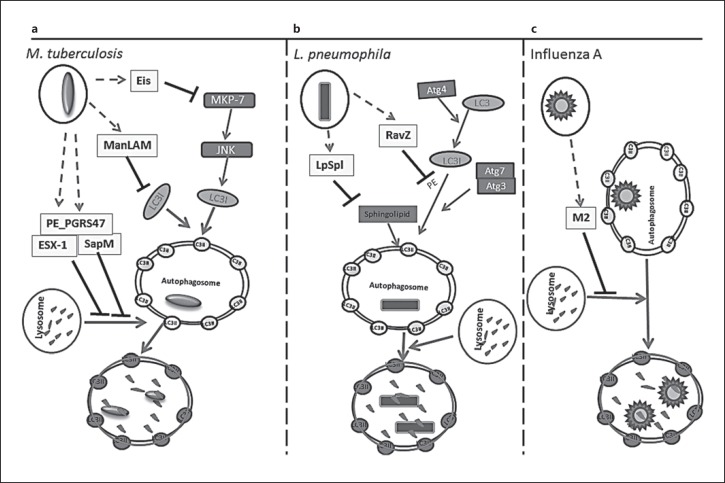Fig. 2.
Strategies used by pulmonary pathogens to avoid host autophagy. a M. tuberculosis has five identified anti-autophagy factors. M. tuberculosis secretion system Esx-1, the secreted phosphatase SapM, and the virulence protein PE_PGRS47 inhibit autophagy by blocking autophagosome lysosome fusing. Eis is an N-acetyltransferase. It acetylates JNK-specific phosphatase MKP-7 to initiate the inhibition of JNK-dependent autophagy. Mannose-capped lipoarabinomannan ManLAM interferes with trafficking proteins in autophagy and also affects LC3 protein expression levels and inhibits accumulation of autophagic vacuoles. b RavZ, the bacterial effector protein of L. pneumophila, inhibits autophagy by hydrolyzing the release of LC3II phosphatidylethanolamine at the carboxyl-terminal glycine residue. The hydrolyzed LC3 cannot be reconjugated by Atg7 and Atg3 to form mature LC3II for autophagosome localization. LpSpl with sphingosine-1 phosphate lyase activity reduces sphingolipid levels, reducing autophagosome formation. c Influenza A's transmembrane protein M2, which arrests autophagosome degradation by blocking autophagosome and lysosome fusion.

